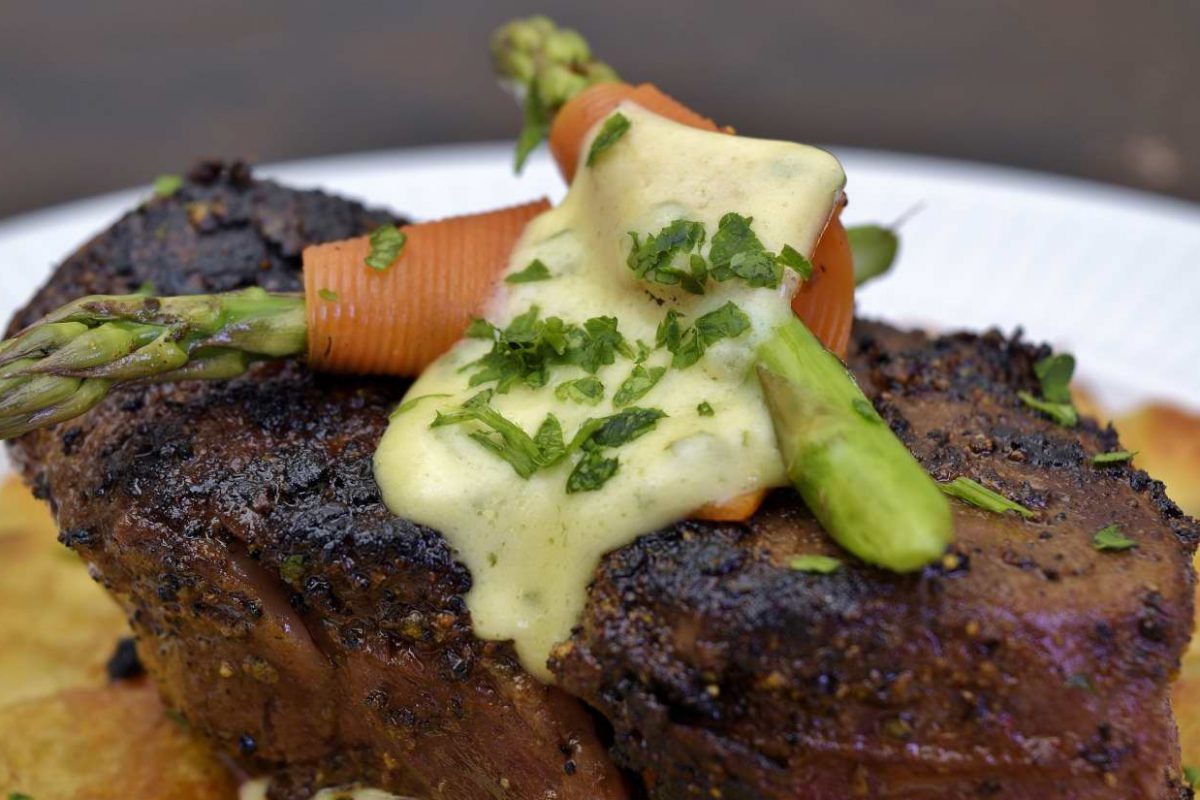Serves 4
Level of difficulty, 2.75
Procedure:
If you are making Bearnaise sauce, the ancient recipe dictates that you put the peppercorns in the sauce pan and crush with a wooden mallet; one alternative is to process for a few seconds in a generic blender to break them apart–make sure you apply the lid, they will fly all over. For the streamlined route–use coarsely ground black pepper. No one at the table will exclaim “You OBVIOUSLY did not crack these peppercorns YOURSELF!” Add the Tarragon, garlic cloves, red wine vinegar, and bay leaf. Reduce by half, strain, and set aside.
Clarifying butter:
Preheat the sous vide bath to
183 F/84 C.
Stage the butter into the Ziploc quart freezer bag (or vacuum), and lay on top of the water in the bath. It will float, because oil is less dense than water. Drape the opening of the bag over the edge of the container and secure with the lid.
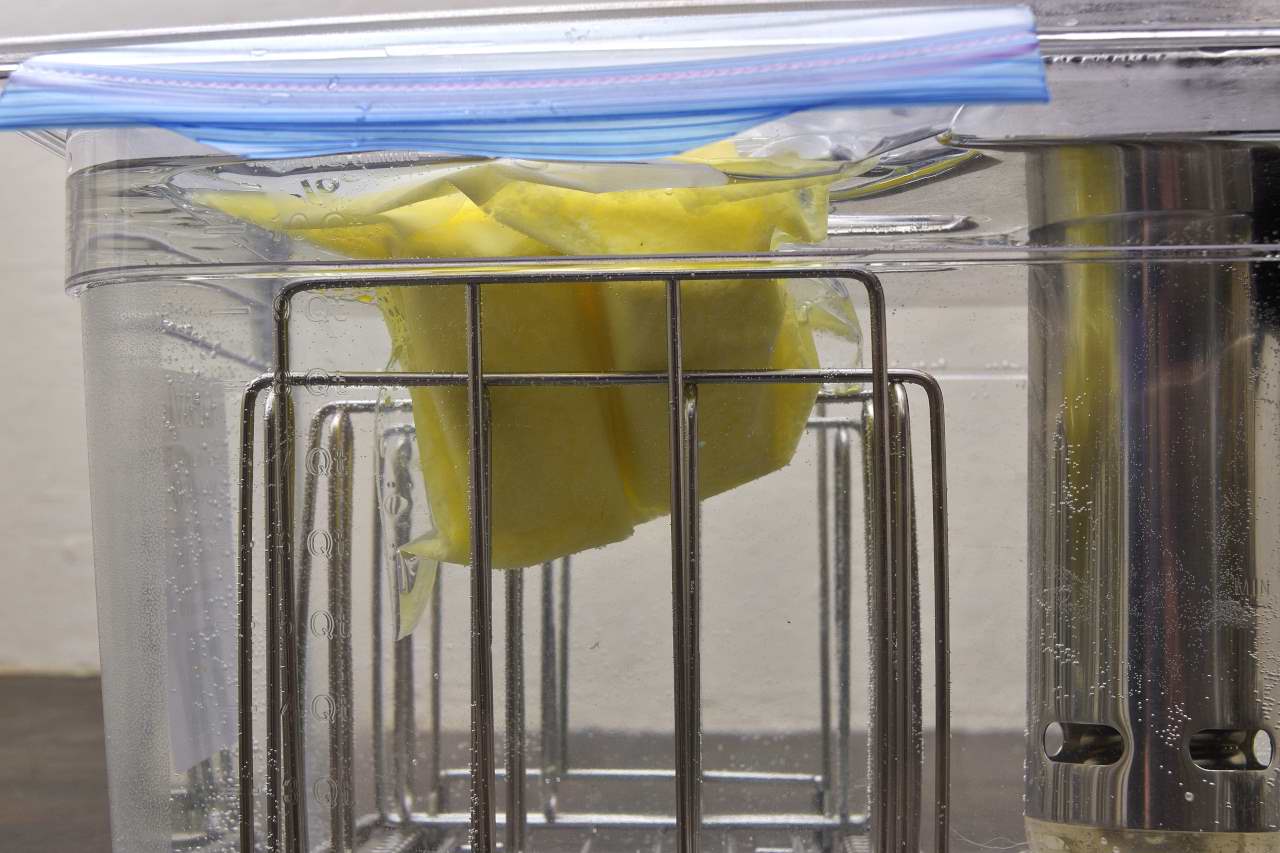
Allow fifteen minutes for the butter to completely melt.
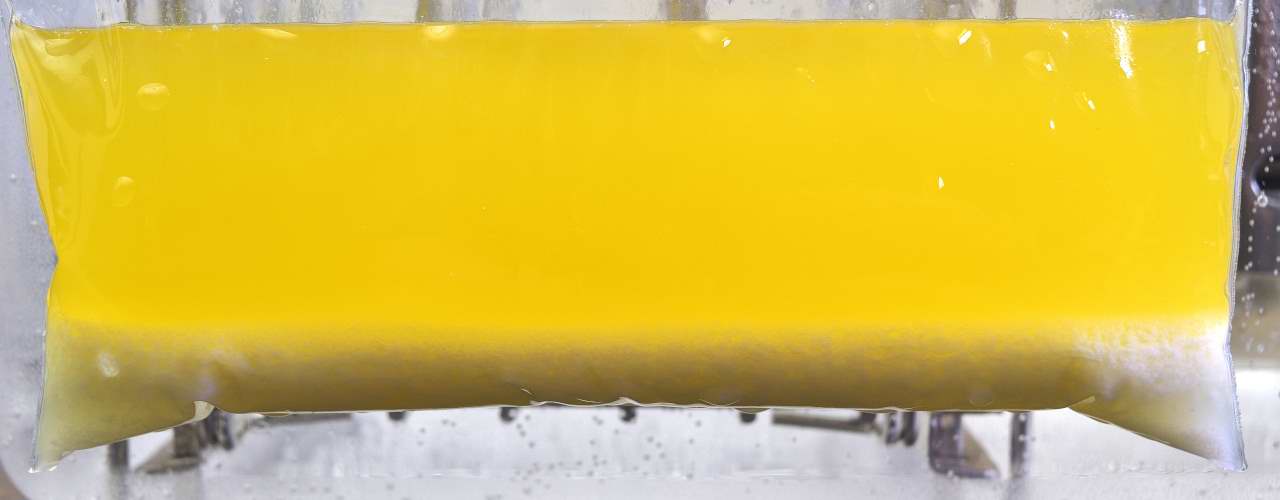
This will separate the butterfat from what they call the “milk solids,” which are actually a watery liquid. I don’t know why they call it that.

Seal the container to prevent the butter from leaking. Put the bag in a bowl filled with iced water.
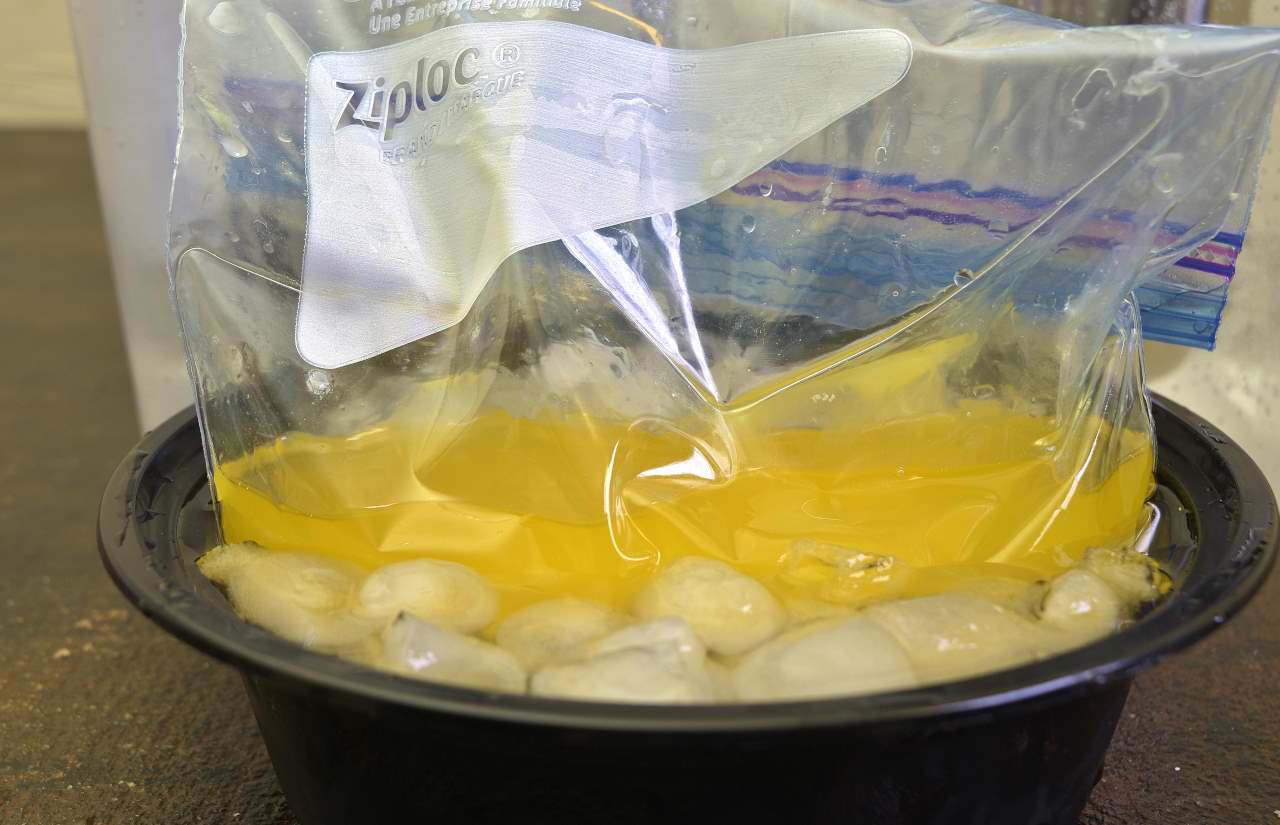
Allow 15 minutes to half an hour for the butter to solidify.
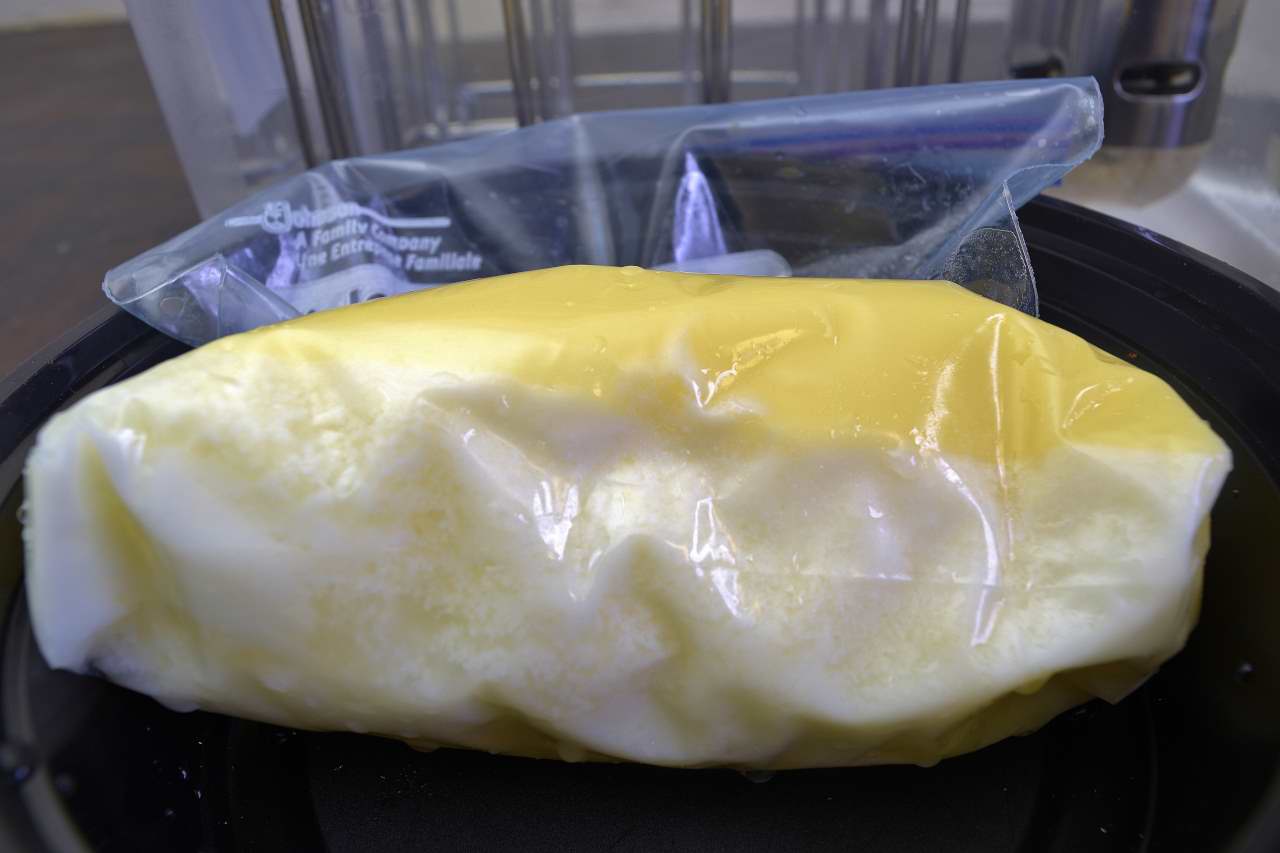
The milky substance will collect in the bottom of the bag, because it is a water base, which is heavier than oil, as I mentioned.
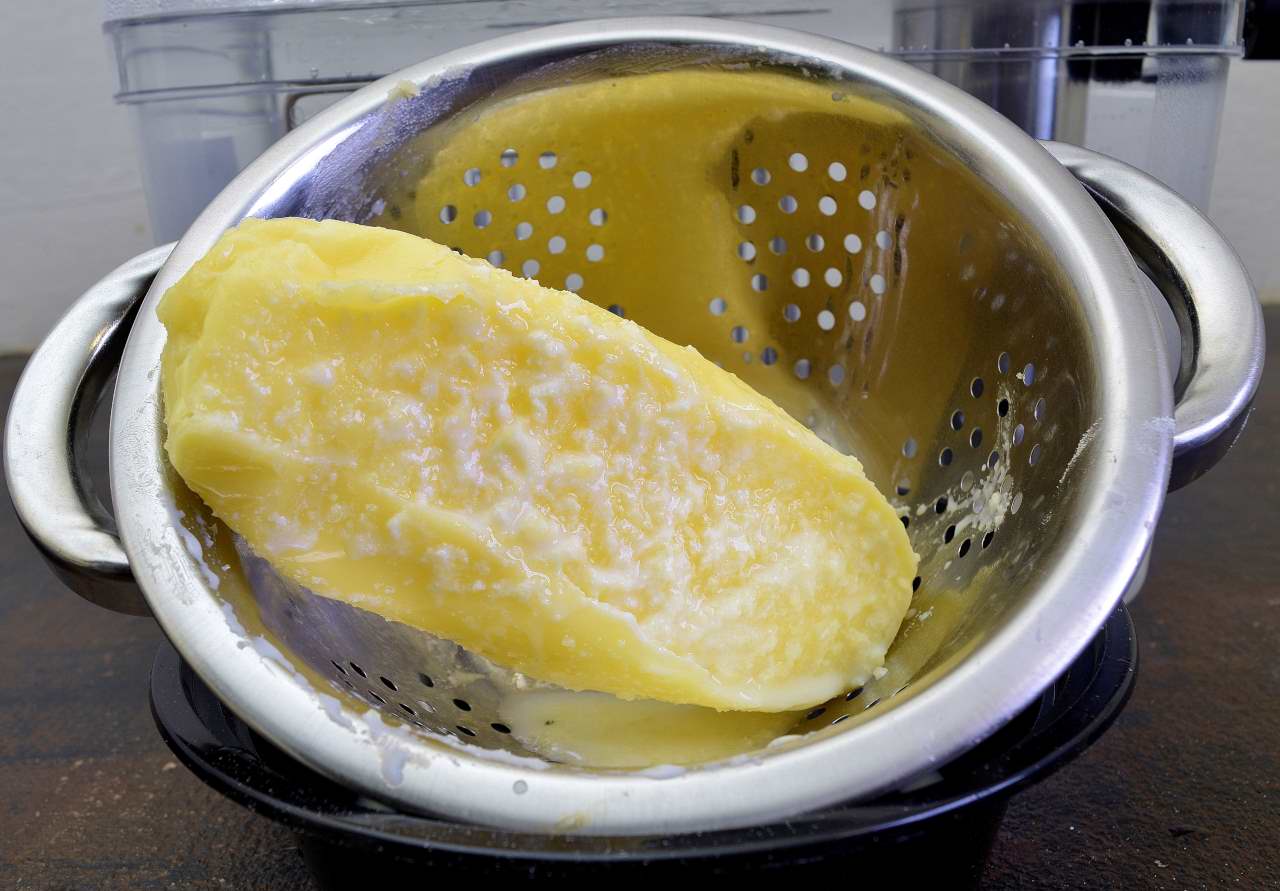
Remove the congealed butter fat from the bag and drain in the colander.
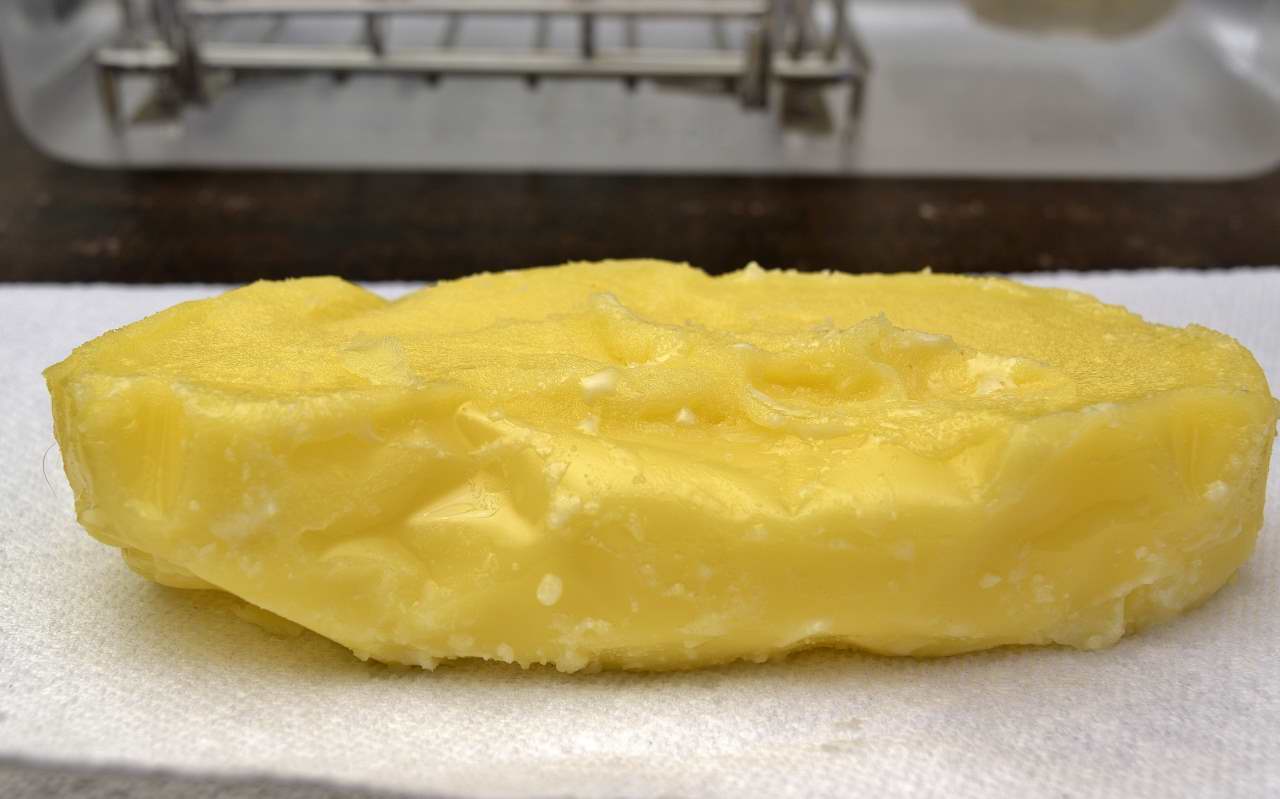
Use a paper towel to finish drying the surface.
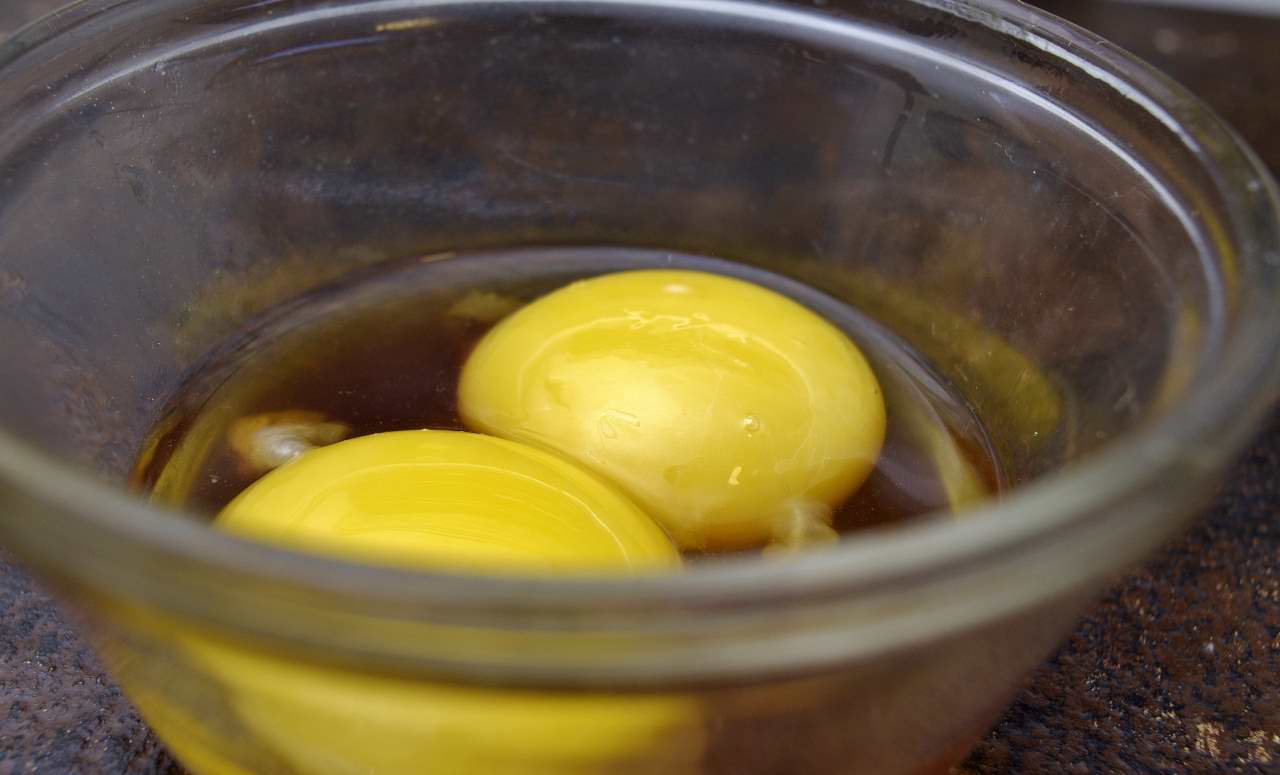
Separate the two eggs into a bowl. For Hollandaise, add 1 Tablespoon lemon juice and 1 Tablespoon water. For Bearnaise, add 1 oz/30 ml of the vinegar reduction.

Reset the temperature in the bath to 165 F/74 C (no need to add cold water). Stage the solidified butter and the egg yolk mixture into a Ziploc quart freezer bag and lower into the bath just as you did the butter in the first step. Again, it will not sink. Drape the opening over the edge of the bath and secure with the lid.
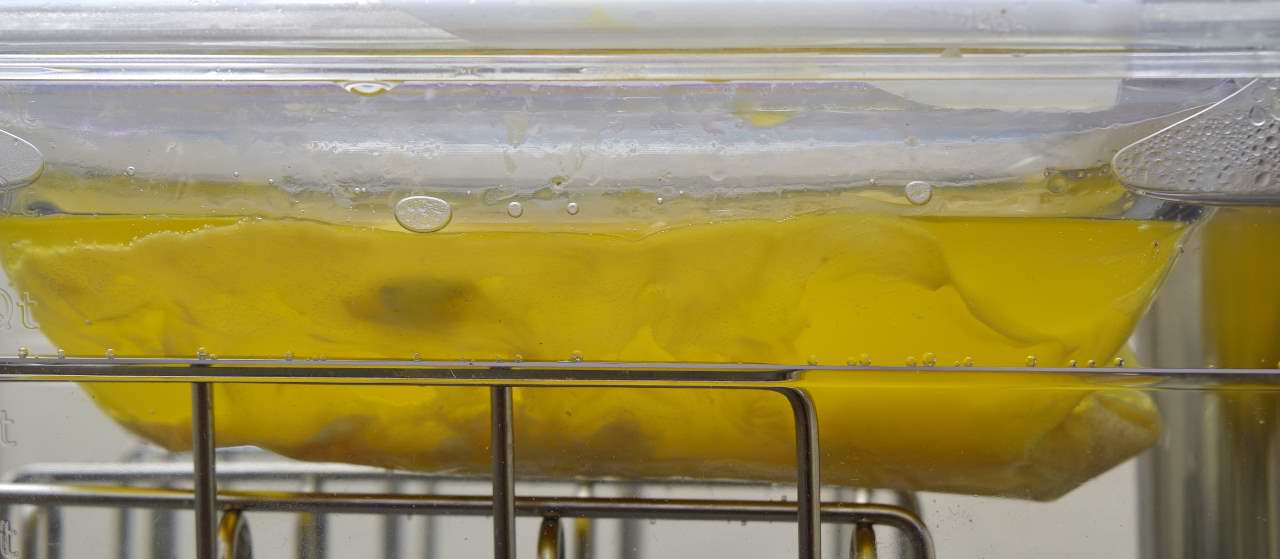
Allow 15 minutes for the butter to melt again and to pasteurize the egg yolks.

Transfer the mixture to the beverage glass. The shape of the glass is important.

The stick blender should just fit into the bottom of the glass, as shown. This is important to isolate the continuous phase (the egg yolks) from the dispersing phase (the butter).
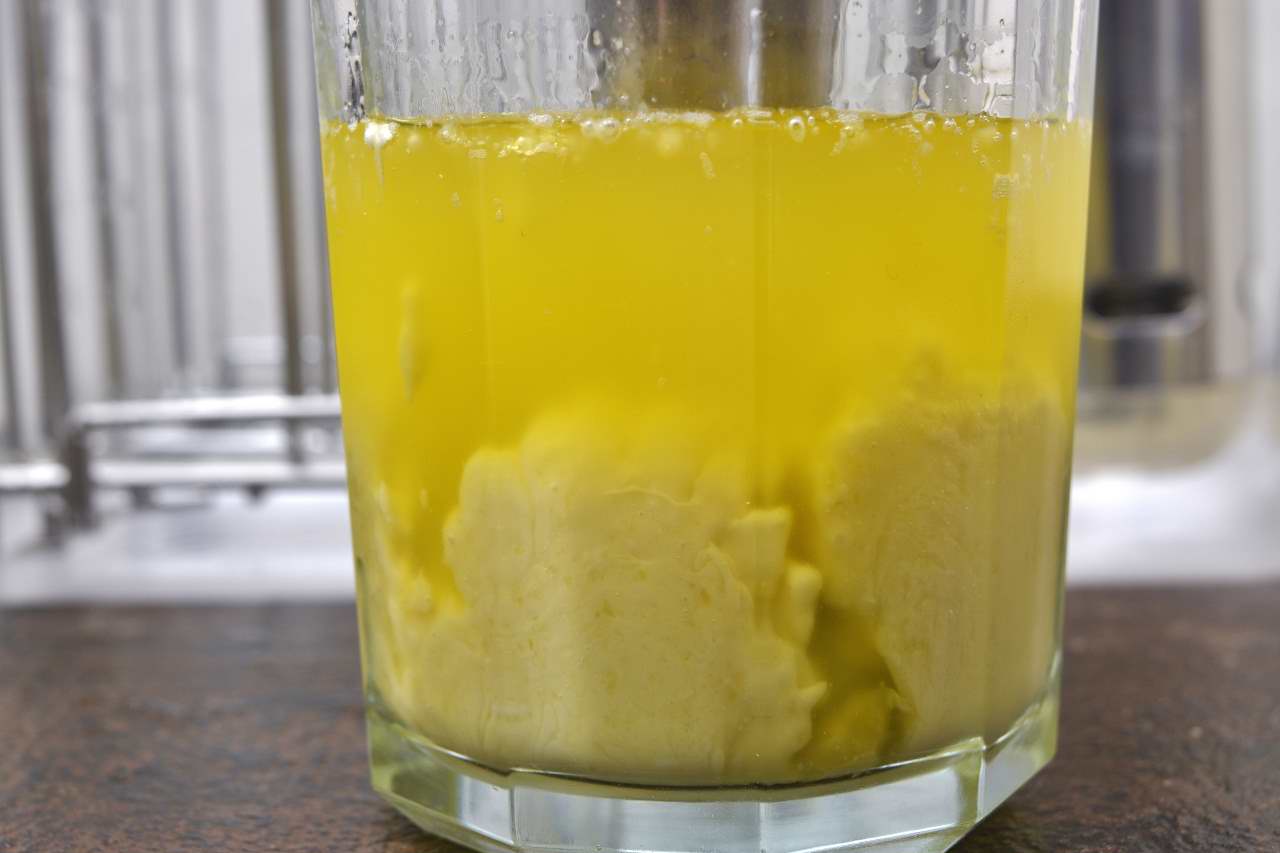
SLOWLY, begin to pulse the stick blender. It will start to pull the butter into the yolks–you can see the little “funnel” as this occurs. Note: I posted a video of this process on youtube, and someone commented that I needed to blend it faster so it didn’t take so long. Sigh, smh. This is not the time to hurry. Pulse. If you do not pulse, believe me, the sauce will break.
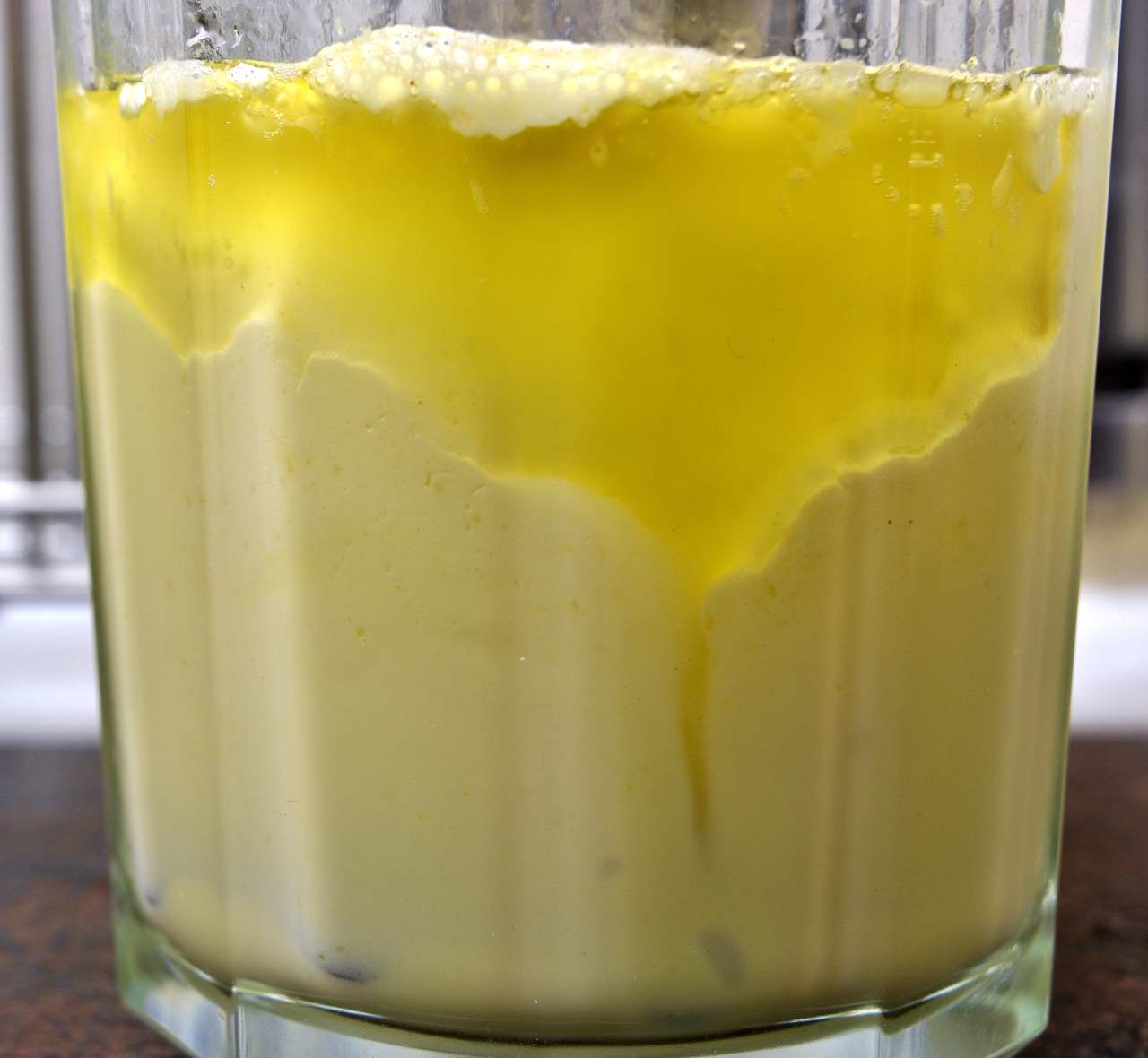
Continue to pulse–again, you can see the vortex where the butter is being pulled into the egg yolk mixture.

The emulsion will expand and the clarified butter will continue to shrink. Tilt the blender slightly as this proceeds, but again, DO NOT LIFT IT UP.

Eventually, there will be only a small amount of clear butter on the top. Do not attempt to mix it in by pulling up the blender. Turn off the blender and remove.
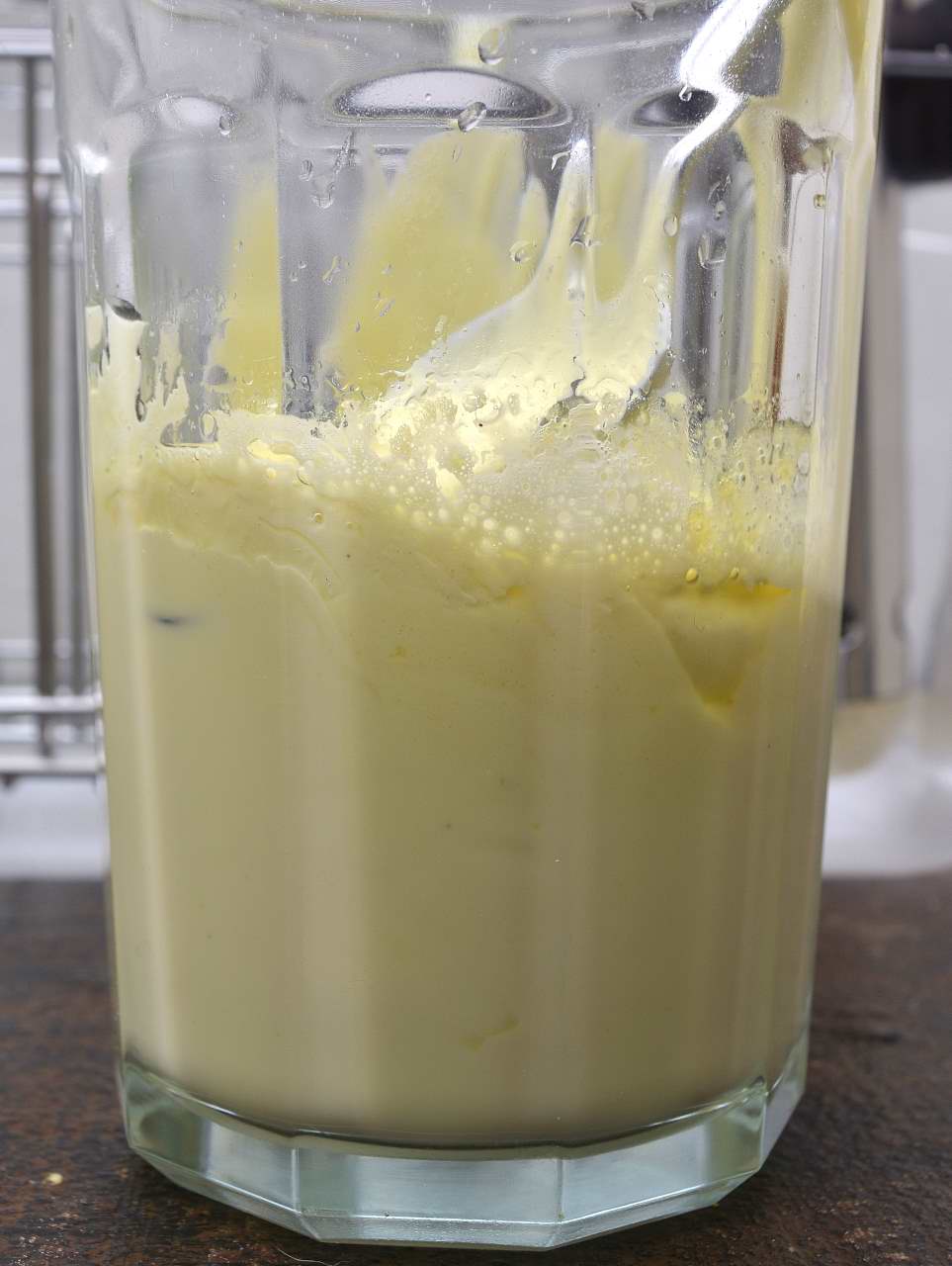
Use a teaspoon to gently stir the sauce in a circular pattern, starting at the bottom. This action will pull the rest of the butter into the sauce. Add the salt and stir lightly. DO NOT CHANGE DIRECTIONS.
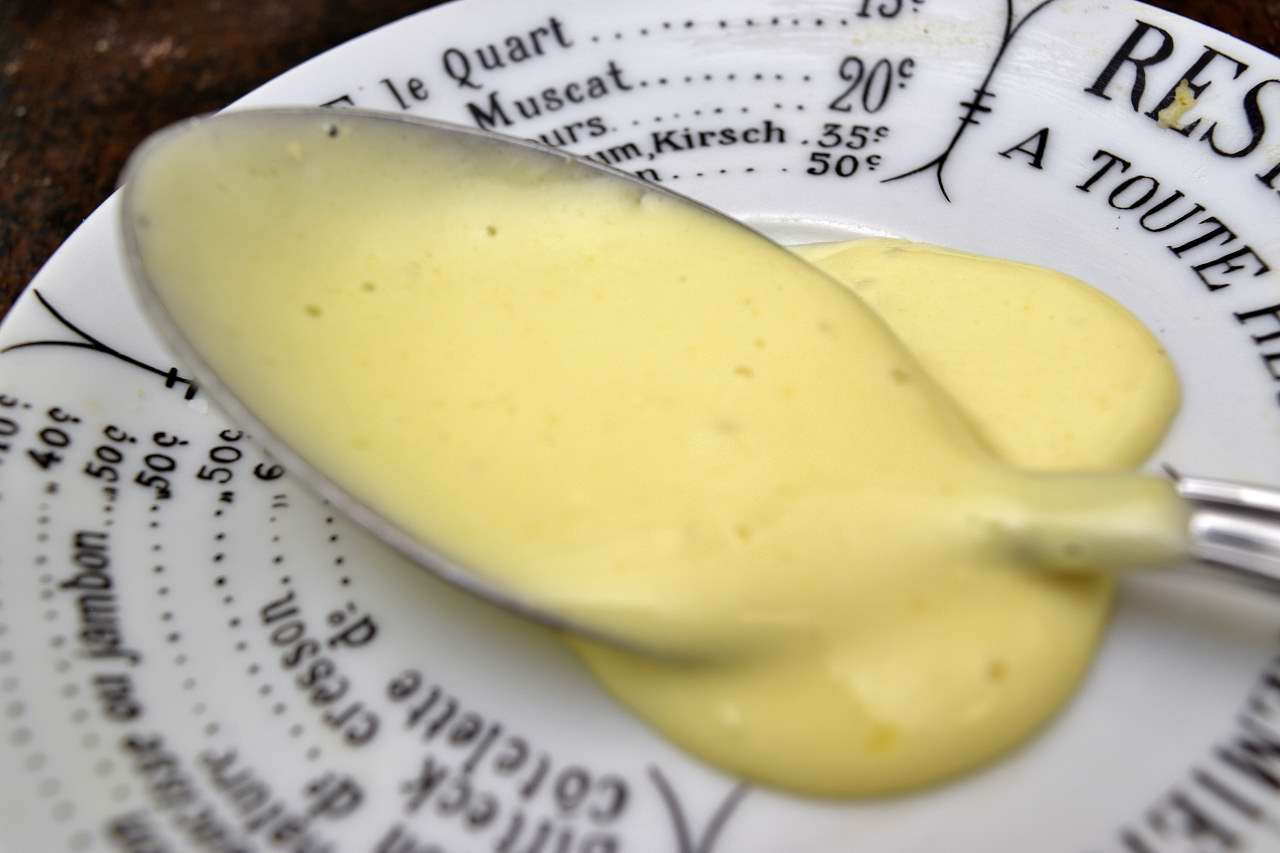
It should look like this. For Bearnaise sauce add chopped parsley so that nobody thinks it’s Hollandaise.

There is no substitute for this sauce.

Happy emulsifying!
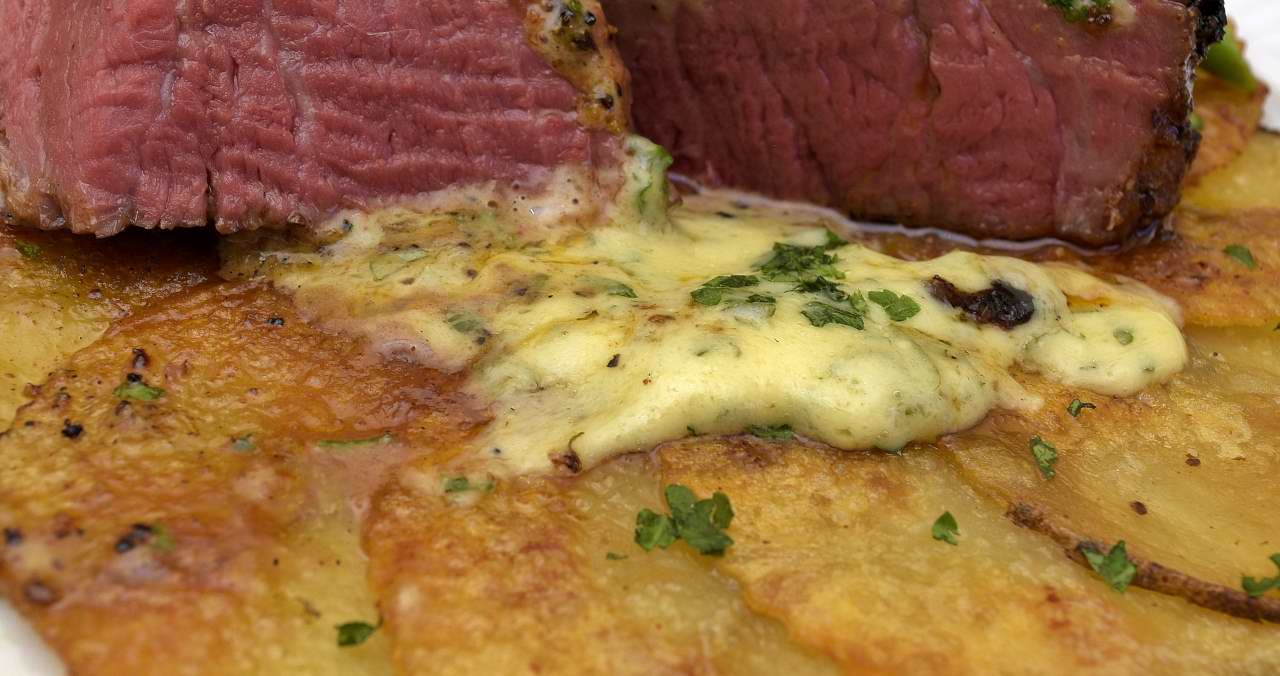
Norm King
